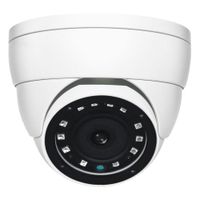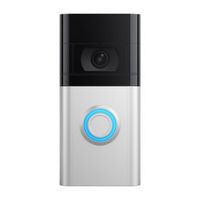Call +(254) 703 030 000 / 751 483 999 / 721 704 777
- Home
- Security
- Video Surveillance
- Video Surveillance Cameras Systems
- Video Surveillance Cameras
.....Read More
Frequently Asked Questions
What are the benefits of using video surveillance cameras for security?
Video surveillance cameras offer numerous benefits for security, enhancing both safety and operational efficiency. Firstly, they act as a strong deterrent against criminal activities such as theft, vandalism, and trespassing, as potential offenders are less likely to commit crimes when they know they are being watched. Secondly, they provide real-time monitoring, allowing security personnel to respond promptly to incidents, potentially preventing escalation.
Additionally, video footage serves as valuable evidence in investigations, aiding law enforcement in identifying and prosecuting offenders. This can also be crucial for resolving disputes or verifying events in both criminal and civil cases. Moreover, surveillance cameras can be integrated with advanced technologies like facial recognition and motion detection, improving the accuracy and effectiveness of security measures.
In workplaces, video surveillance enhances employee safety and can boost productivity by ensuring adherence to company policies and procedures. It also helps in monitoring customer interactions, improving service quality, and ensuring compliance with health and safety regulations.
For businesses, video surveillance can lead to cost savings by reducing the need for physical security personnel and minimizing losses due to theft or damage. In residential settings, they provide peace of mind by ensuring the safety of family members and property.
Furthermore, modern surveillance systems offer remote access, allowing users to monitor their premises from anywhere via smartphones or computers, providing flexibility and convenience. This capability is particularly beneficial for large or multiple-site operations.
Overall, video surveillance cameras are a critical component of a comprehensive security strategy, offering both preventive and reactive benefits that enhance safety and protect assets.
How do varifocal lenses in surveillance cameras work?
Varifocal lenses in surveillance cameras allow for adjustable focal lengths, enabling users to zoom in or out without changing the lens. These lenses consist of multiple glass elements that can be moved relative to each other to alter the focal length. This adjustability provides flexibility in monitoring different areas with varying levels of detail.
The primary components of a varifocal lens include the zoom mechanism, focus mechanism, and aperture. The zoom mechanism adjusts the focal length, allowing the field of view to change from wide-angle to telephoto. This is typically achieved by rotating a ring on the lens or using a motorized control. The focus mechanism ensures that the image remains sharp as the focal length changes. This can be manually adjusted or automatically controlled by the camera's software.
Varifocal lenses are particularly useful in surveillance applications where the exact monitoring requirements may change over time or where precise camera placement is challenging. They allow for initial setup flexibility, enabling installers to fine-tune the field of view and focus after the camera is mounted. This adaptability is crucial in environments where different levels of detail are needed, such as identifying faces or license plates at varying distances.
The aperture of a varifocal lens can also be adjusted to control the amount of light entering the camera, affecting the depth of field and exposure. This is important for maintaining image quality in different lighting conditions.
Overall, varifocal lenses provide versatility and convenience in surveillance systems, allowing for dynamic adjustments to meet specific monitoring needs without the need for multiple fixed lenses.
Can dummy surveillance cameras effectively deter crime?
Dummy surveillance cameras can deter crime to some extent, primarily through the perception of increased risk for potential offenders. The presence of what appears to be a surveillance system can make criminals think twice, as they may believe they are being watched and recorded. This perceived risk can be enough to deter opportunistic crimes, such as vandalism or theft, especially in areas where the presence of real cameras is common.
However, the effectiveness of dummy cameras is limited. Experienced criminals or those who are determined may be able to identify fake cameras, especially if they lack certain features like blinking lights, wires, or realistic movement. Once identified as fake, these cameras lose their deterrent effect entirely.
Moreover, dummy cameras do not provide any actual security benefits, such as recording evidence or alerting authorities in real-time. In situations where a crime does occur, they offer no assistance in investigation or prosecution, unlike real surveillance systems.
In summary, while dummy cameras can provide a low-cost deterrent effect in some situations, their effectiveness is limited and they should not be relied upon as the sole security measure. Combining them with other security strategies, such as real cameras, lighting, and physical barriers, can enhance overall security and provide a more comprehensive deterrent to crime.
What is the difference between fixed and varifocal lenses in video cameras?
Fixed lenses have a single focal length, meaning they cannot zoom in or out. They offer a consistent field of view and are typically used in situations where the camera's position and the desired framing are constant. Fixed lenses are generally simpler, more compact, and often provide better image quality due to fewer moving parts and optimized optics for a specific focal length.
Varifocal lenses, on the other hand, allow for adjustable focal lengths, enabling the user to zoom in or out to change the field of view. This flexibility makes them suitable for dynamic environments where the subject distance or framing requirements may change. Varifocal lenses are more complex, often larger, and may require manual or motorized adjustments. They can be more versatile but might compromise on image quality compared to fixed lenses due to the additional optical elements needed for zooming.
In summary, fixed lenses are ideal for static, predictable settings with a focus on image quality, while varifocal lenses offer adaptability and versatility for changing environments.
How do network IP video cameras function and what are their advantages?
Network IP video cameras function by capturing video footage and transmitting it over an IP network, such as a local area network (LAN) or the internet. These cameras have built-in web servers, network interfaces, and often include features like motion detection, audio recording, and remote access. They connect to the network via Ethernet cables or wirelessly through Wi-Fi. Once connected, they can be accessed and controlled remotely using a computer, smartphone, or tablet through a web browser or dedicated app.
The video data is digitized and compressed using codecs like H.264 or H.265, which reduces bandwidth usage and storage requirements. The cameras can store footage locally on SD cards or send it to network-attached storage (NAS) devices, cloud services, or digital video recorders (DVRs).
Advantages of network IP video cameras include:
1. **Remote Access**: Users can view live or recorded footage from anywhere with internet access, providing flexibility and convenience.
2. **Scalability**: Easily add more cameras to the network without significant infrastructure changes, making them suitable for both small and large-scale installations.
3. **High Resolution**: IP cameras often offer higher resolution than analog cameras, providing clearer and more detailed images.
4. **Advanced Features**: Many IP cameras come with features like motion detection, night vision, two-way audio, and video analytics, enhancing security and monitoring capabilities.
5. **Integration**: They can integrate with other network devices and systems, such as alarms and access control systems, for comprehensive security solutions.
6. **Cost-Effective**: Reduced need for extensive cabling and the ability to use existing network infrastructure can lower installation and maintenance costs.
7. **Data Encryption**: Enhanced security features, including data encryption, protect against unauthorized access and ensure privacy.
Are wireless video cameras reliable for security purposes?
Wireless video cameras can be reliable for security purposes, but their effectiveness depends on several factors.
1. **Connectivity**: Wireless cameras rely on Wi-Fi for data transmission. A strong, stable internet connection is crucial for consistent performance. Weak signals can lead to interruptions or delays in video streaming.
2. **Power Source**: Many wireless cameras are battery-operated, which offers flexibility in placement but requires regular maintenance to ensure they remain powered. Some models offer solar charging or can be plugged into a power source for continuous operation.
3. **Video Quality**: High-definition cameras provide clearer images, which are essential for identifying intruders. However, higher resolution requires more bandwidth and storage.
4. **Storage Options**: Wireless cameras often offer cloud storage, which provides secure, off-site video storage but may involve subscription fees. Local storage options, like SD cards, are also available but can be vulnerable to theft or damage.
5. **Security Features**: Advanced features such as motion detection, night vision, and two-way audio enhance security. Encryption and regular firmware updates are essential to protect against hacking.
6. **Environmental Factors**: Weather-resistant models are necessary for outdoor use to withstand elements like rain, wind, and extreme temperatures.
7. **Integration**: Compatibility with smart home systems can enhance functionality, allowing for automation and remote access via smartphones or other devices.
8. **Cost**: While generally more affordable than wired systems, costs can add up with additional features, storage plans, and maintenance.
In summary, wireless video cameras can be a reliable component of a security system if chosen and maintained properly, considering factors like connectivity, power, and security features.
How can I access and view footage from my surveillance cameras remotely?
1. **Internet Connection**: Ensure your surveillance system is connected to the internet. This typically involves connecting the DVR/NVR or IP cameras to a router via Ethernet or Wi-Fi.
2. **Camera Software/App**: Install the manufacturer’s app or software on your smartphone, tablet, or computer. This is usually available on the App Store or Google Play Store for mobile devices, or the manufacturer's website for desktop applications.
3. **Account Setup**: Create an account within the app/software. This often requires an email address and password. Some systems may require you to register the device using a unique ID or QR code found on the camera or DVR/NVR.
4. **Port Forwarding**: Configure port forwarding on your router to allow external access to your cameras. This involves logging into your router’s settings and forwarding specific ports to the IP address of your DVR/NVR or cameras.
5. **Dynamic DNS (DDNS)**: If your internet service provider assigns dynamic IP addresses, set up a DDNS service. This provides a consistent domain name to access your cameras, even if the IP address changes.
6. **Cloud Service**: Some systems offer cloud-based services for remote viewing. Subscribe to the service, if available, and follow the setup instructions to link your cameras to the cloud.
7. **Accessing Footage**: Open the app/software and log in. You should see a list of connected cameras. Select the camera you wish to view. You can usually watch live footage, review recorded clips, and adjust settings remotely.
8. **Security Measures**: Enable two-factor authentication if available, regularly update passwords, and ensure the app/software is up to date to protect against unauthorized access.


